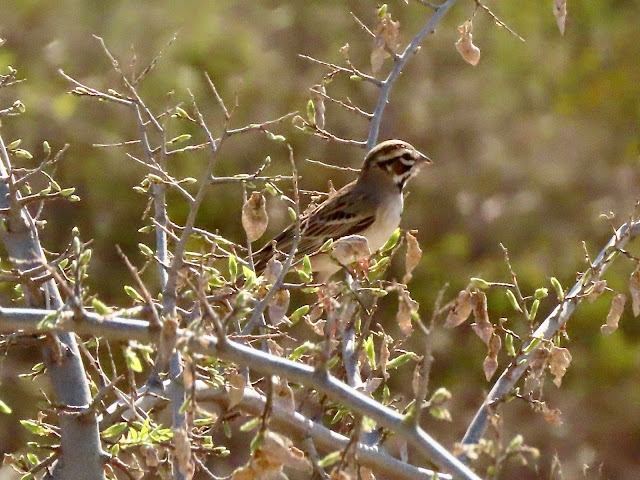Saturday, May 8, 2021
On Friday evening (5/7/21) I heard from Kathe Anderson, well known local bird leader telling me that she had a family matter that would keep her from doing her planned Team exploration of Oak Flat and Superior for the Global Big Day. Knowing that I’ve been phasing out my group participation in favor of solo explorations at various places, she asked if I was locked in for the Migratory Birding Day in Arizona.
As luck would have it, “No.” And, Oak Flat is one of my favorite birding spots. So, I said, “Sure.” I would step in and help her out. Arrangements were then made with the two participants on her team. Thus, the three of us headed east to Oak Flat Campground located about 4.5 miles beyond Superior.
With Covid restrictions, I hadn’t birded Oak Flat for more than a year and was eager to see what we might find during this spring migration.
Jane B. and Linda H., competent birders that have been going out for quite a number of years themselves, were enjoyable company and contributed a good portion of verified species to our count.
Starting at 6:00 a.m., Oak Flat Camp Ground in the Tonto National Forest, provided us with a chorus of birds. We followed sparrows foraging in tall grasses and short manzanita bushes in the chilly morning.
Covering the open areas beyond the awakening campers, we came up with GRAY, VERMILLION, and BROWN-CRESTED FLYCATCHER and one CASSIN’S KINGBIRD. We first heard a JUNIPER TITMOUSE and then saw the tiny bird flit from one bush to another. A male WESTERN BLUEBIRD with its rounded head and bright color was a treat standing on a pile of brush on the ground.
By the time we wrapped up 3 hours and 20 minutes later, we had observed 5 Sparrow species (Black-chinned, Black-throated, Lark, White-crowned, and Vesper); 5 Warbler species (Lucy’s, Yellow, Yellow-rumped, Townsend’s, and Wilson’s) as well as some expected Canyon and Spotted Towhee, Hooded and Bullock’s Oriole. More surprising to me were the number of BLACK-HEADED GROSBEAK (6) and one BLUE GROSBEAK.
A pair of BRONZED COWBIRD in one of the emory oaks was one of my best surprises of the morning.
The oak trees there reminded me of what was called “Live Oak” in Virginia. Well, good reason for that; they are the same species. The glossy yellow/green leaves on these oaks drop and are replaced so indiscriminately one by one, that there is no noticeable time that the tree is not full of leaves. Leaves and photographs are difficult challenges for me especially when “counting” is our purpose.
Below I’ve posted a few of the good and the poor photos. And, as usual, the eBird list is available for viewing when you click the link at the end of this Oak Flat CG report.
View this checklist online at https://ebird.org/checklist/S87518042
View this checklist online at https://ebird.org/checklist/S87520047







No comments:
Post a Comment